Fatal Friends, Deadly Neighbors Read online
Page 17
“How well do you know Jonah Shacknai?”
“We don’t know him well—just well enough to say ‘Hi’ when we ran into each other. We’d meet him at City Hall when there were meetings about changes in the building codes. He owned a few other homes in Coronado that he was fixing up for resale.
“At Easter, I saw Jonah playing football with his kids on the lawn.”
There were parts of the case that the detectives didn’t want revealed to the general public yet, and they asked all the neighbors not to tell anyone that the victim was naked—and not to say if it was a male or female—not yet. They wouldn’t be able to keep this information secret for long, but perhaps they could keep it on the down-low for a few hours.
The husband said they had been away from home all day on Tuesday. “We left about ten A.M., and got home at eight thirty P.M..,” he said. “We didn’t hear anything unusual during the night.”
The husband rose as usual at 5 A.M., and his wife said she had heard a dog barking next door around seven.
The next homeowners had more to say, giving the detectives a glimmer of hope that there might be witnesses who could help them determine what had happened to Becky Zahau.
The husband had gone to his room before 11 P.M., but his wife was in the other part of their mansion where she was watching a favorite television show that came on at 11:30. She rarely missed it.
“It was a warm night and our front windows were open,” she said. “I heard kids—teenagers—hollering from the beach side of the street. We’re used to that. But it was ten minutes later—about twenty minutes to twelve—when I heard a woman screaming. It came from the direction of Jonah’s house.”
“It wasn’t the kids yelling again?”
“No.” She shook her head sharply. “This was a grown woman—maybe in her late twenties or early thirties. There’s a difference. I heard a scream, and then another scream, and then ‘Help! Help!’ I turned the TV down to listen.”
“Was it from the beach?”
“No. She was screaming from this side of the street.”
While the neighbor listened, the cries for help subsided and then stopped. The witness said she couldn’t decide what to do: wake her husband or perhaps call the police. She waited to see if there were more cries in the night.
But she had heard only the teenagers again. They were definitely down on the beach, and those shouts and laughter were not what she had heard a few minutes earlier. The woman’s screams had come from the witness’s own front yard or possibly over in Jonah Shacknai’s yard.
And then there were no sounds at all. In the end, the woman hadn’t told anyone about the screams. Not her husband. Not the police.
Another neighbor told the detectives that she had met Jonah Shacknai’s girlfriend—but only briefly. Becky, wearing a bikini bathing suit, was riding a bicycle on Ocean Boulevard and stopped to introduce herself, saying she and Jonah would be living in his estate for the summer.
But that was weeks before Rebecca died.
Becky Zahau loved Jonah Shacknai and was happy to live wherever he lived, but she didn’t seem to have any friends in the posh California neighborhood on Ocean Boulevard and she was probably lonesome. Women as beautiful as Becky was often have a difficult time finding female friends.
If someone had called 911 during the shadowy hours of Tuesday night, was it possible that Becky Zahau could have been saved? It didn’t seem likely that a would-be suicide would scream for help—or could scream at all if she had a noose around her neck. But a woman in peril might well call out desperately if she was running from an attacker. If she had cried out for help from someone who overpowered her, strangled her, and then hung her from a rope to make her death look like a suicide, no one else had heard her.
Hank Bowden,* who was vacationing in Coronado with his family, contacted the San Diego County and Coronado detectives, saying he might have information that would help their probe.
The Web designer said that he and his family were riding bicycles from a grocery store back to their vacation home shortly before 10 P.M. on July 12.
His children had spotted a possum waddling beside the road and stopped to watch it. He happened to stop his bike right in front of the Spreckels Mansion, where he waited for them to catch up with him. He had glanced up at the Shacknai residence and noticed some movement at the front door. He could see that it was a woman, and he watched her. She checked the door but didn’t go in. She was nervously turning around, and walking back and forth—as if she was “trying to decide whether to go in.”
Then she came down from the porch, walked back and forth some more, hesitated, and started pacing again. Finally she walked along some grass that adjoined the driveway and disappeared.
The informant told detectives he thought she was behaving in a peculiar way, but at that point his kids and wife had caught up with him. His wife had also seen the indecisive woman walking toward the back of Shacknai’s estate on the driveway and then into the shadows beyond. They both wondered about her, but she didn’t exactly look like a home invasion robbery suspect, so they rode on home, arriving at about 11:25 P.M..
The bicyclist said he’d wakened to the sound of sirens early the next morning, and he followed them to the Spreckels Mansion, where he learned a woman had been found dead.
Two detectives took him into the mobile crime scene office. He described the woman he’d seen. They nodded but gave him no information about who it could have been.
Curious, he’d checked the name “Shacknai” on his computer and come across a photograph of Dina Shacknai. He was positive that she was the woman he had seen at 1043 Ocean Boulevard, so he returned to the mobile office and told the detectives. They interviewed him again, and showed him a lay-down of six photographs. One woman looked like the mystery woman, but she had light hair.
When he heard later that it was Dina’s twin—Nina—who said she was at the mansion, he could not agree with that. He insisted it was Dina, Max’s mother, he had seen and she had dark hair.
The bicyclist must have been mistaken. Numerous witnesses place Dina in the hospital at Max’s bedside throughout Tuesday night.
He also looked at photographs of Becky Zahau. The woman pacing around the entrance to the mansion had looked nothing at all like the dead woman.
“Did you see her go inside?” a detective asked.
“No,” he said. “This woman didn’t appear to go into the Spreckels Mansion—she only walked back and forth from the front porch to the driveway several times in a way that made her look distressed—but not terrified.”
Was this another suspect in a case that was growing stranger by the hour? Or could it have been Becky herself, wandering the darkened grounds of her lover’s estate, beside herself with grief over Max? Or so upset with something or someone inside the estate that she was afraid to go back inside?
Everyone looks different in the dark.
There was one thing no one but a very few people knew: the back door of the mansion was never locked! Jonah, Adam, Becky, and Dina—who had once lived there—knew that. Possibly Nina did, too.
There may have been others aware of the unlocked door—deliverymen, employees who worked around the estate. It was hard to know how many—if any.
Chapter Eight
Becky Zahau’s autopsy began at 10:18 on the morning of July 14. Aside from Dr. Lucas and his assistants, there were many witnesses. From the San Diego Sheriff’s Department came detective Mark Palmer and forensic evidence technicians John Farrell and Brande Silverthorn. Detective Keith James represented the Coronado Police Department. Deputy district attorney William LaFond was there, along with forensic autopsy specialist Steve Hannum.
Rebecca was nude except for a “Power Balance” band on her right wrist, and a black “Bionic Band” and yellow “Live Strong” band on her left. She had clearly been a believer in exercise and a healthy lifestyle.
And her autopsy would show that she had been in perfect shape. All of her organs,
including her heart and lungs, demonstrated how careful she had been about her health. Although she was petite, she had strong muscles. If she had been attacked by someone who choked her and then hung her, and if she had any warning, she would have fought hard to survive.
Perhaps she had no warning at all.
Rebecca was very well groomed, with permanently tattooed eyebrows and eyeliner, and her very long black hair was clean and shiny. She had medium-sized breast implants, a taut body, and neatly trimmed fingernails painted a bright orange.
The thick, reddish-orange towrope had been used to bind Rebecca’s hands behind her back and tie her ankles together. There were five loops around her right wrist and six around her left. At their narrowest point, it was possible to separate her wrists about two and a half inches. The rope was eighty-four inches long and extended from the slipknot on her left wrist, exiting between her right index and middle finger. The shorter segment of the same rope extended from a fixed knot on her right wrist. The segments of rope were haphazardly arranged in a figure-eight pattern.
Dr. Lucas noticed a small amount of what appeared to be black paint on one of the loops around her left wrist. He had noted black paint dabs on her breasts the evening before.
He found that Rebecca’s right hand could be slipped out of the binding with mild pressure, and when he took up slack on the right side, her left hand could be removed. Her ankles were bound much the same way as her wrists were.
There is, of course, an immediate question that begged an answer. Why would someone intent upon hanging herself even bother to tie her hands and feet? How could she have managed to get up on the balcony’s railing and drop off—without the use of either her hands or legs? And she surely could not have slipped her hands out once she dropped at the end of a noose.
Another segment of the towrope was around Rebecca’s neck, and it had left deep furrows and petechiae (pinpoint hemorrhages) before it reached its apex behind her right ear. Her neck was not broken, but there was a good deal of hemorrhaging in the sternocleidomastoid and strap muscles there. The pathologist felt this had occurred when she had dropped the nine feet, two inches from the balcony.
Perhaps.
There were many petechiae in Becky’s eyes, face, and mouth, and coarser petechiae above the furrow left by the rope in her neck. These small explosions of blood occur during strangulation—whether by human hands, ligature or garrote, or hanging. Her hyoid bone (at the far back of her tongue) was fractured, something that often happens when a victim is manually strangled.
A detail that most women might notice—but men wouldn’t—was that Becky’s long hair was beneath the rope around her neck. Women whose hair extends below their necks invariably lift it when they put on coats or other garments that might bind it in. If Rebecca Zahau had intended to hang herself, it would seem logical that she would lift her hair free of the rope, if only to get a tight fit around her neck.
When Dr. Lucas had initially examined her body around 7:30 the night before, he had found rigor mortis was marked in her upper and lower extremities (arms and legs), and in her neck and her jaw. By then she had lain on the grass all day and into the evening. The purplish lividity pattern in her body was along her back and the back of her legs, and it was fixed. If she had hung for hours during the night before being discovered, gravity would have dropped the deepest purple-red stains to her feet and lower legs.
The towrope was seven-sixteenths of an inch thick, and the handle had a warning that read, “Intended only for towing up to a maximum of two people or 340 pounds on an inflatable tube.”
The manner in which the rope was knotted and tied was extremely complicated, done by someone accomplished and familiar with such knots. A Boy Scout or a sailor would surely know more about tying ropes than Rebecca would.
Some of the findings were problematic. Becky had blood in her vaginal vault, and dried blood along her perineum, trickling down the inside of her thigh, but it didn’t appear that she had been raped. She had possibly been menstruating at the time of her death.
There were no contusions on her vulva or inside her vagina. A birth control device was still in place in her uterus.
But it was possible that she had struggled for her life. She had a group of three linear abrasions on the center of her forehead. The scratches ranged in length from one inch to one and three-fourths inches. There was a scratch on her upper right forehead, almost hidden by her hairline.
How had those gotten there? More puzzling were the four hemorrhages beneath the right front part of her scalp. This blood was trapped between the bony part of the skull and the scalp, in what is called the subgaleal area. It is a problem found most often in newborns after a tough delivery, but it can also be caused by blows to the head in adults.
It was fairly easy to attribute some of the scratches on her body to bramble bushes beneath the balcony where Rebecca had allegedly been hanging. Moreover, if she had run for her life in the dark, she could have sustained similar cuts. Most of the scratches, small cuts, punctures, and bruises were on her back extending from her neck to the middle of her buttocks.
On the back of Rebecca’s right hand, Lucas saw four red scratches, and there was a deeper abrasion between her third and fourth finger with skin tags that had been torn free at the edges of the wound.
Her feet were caked with mud.
* * *
If there were questions about what the investigators found outside the Spreckels Mansion, there were even more about what was inside. Detective Angela Tsuida, who was directing the murder probe, wrote a report about what she found on the second floor of the main house. Rebecca’s room was at the east end of the second level of the residence. Detective Tsuida noted a white and green towel in the hallway just outside that bedroom, along with drops of what looked like dried blood.
It could also have been black paint.
More chilling, however, was a crudely painted message on one panel on the hall side of the door. Someone had used black paint as a medium to print the words, all in caps:
SHE SAVED HIM
CAN YOU SAVE HER
What on earth did that signify? The meaning behind these seven words has eluded almost everyone who has heard about them. There have been myriad opinions on who “SHE” was and who “HIM” and “HER” were. If this was a code, it certainly wasn’t going to be easy to decipher.
Early on, the sheriff’s office chose to keep what was painted on the door a secret. It could have become one of the unknown bits of evidence that might distinguish a chronic confessor from a real murderer.
Just inside Rebecca’s room, Tsuida found two paintbrushes. One had black paint on its bristles. There were also two knives—one with a four-and-a-half-inch blade, and the other with an eight-inch blade—a white plastic bag, and, closer to the bed, a tube of black paint. She also saw the now-familiar red towrope.
Although the connections among these items of possible vital physical evidence were obscure at this point, it might all come clear as the investigation proceeded.
And then again, some of these items might never be explained adequately.
Farther inside the room, there was a brass and white metal full-sized bed, a desk, chair, bedside tables with matching lamps, shelving, and a bookcase.
Rather than a woman’s bedroom, it appeared to have been used as an office. There were two computers there, but the furnishings were not particularly feminine or expensive. Tsuida noted things that might indicate a struggle had taken place here. The desk chair had been knocked over from where its original position probably was—squarely in front of the desk.
The bed was formed into a delicate design, the brass posts highly polished and the white portion shaped into narrow filigrees, circles, and carved rose shapes.
The room was fairly neat except for the out-of-place furnishings. The bed’s frame was pulled ten to twelve inches away from the wall. One end of the red rope was still tied to the left bottom leg of the bed with the same complicated knots that
bound Becky Zahau’s ankles and wrists. From there, the towrope crossed the room, went through the door out onto the balcony, and, finally, over the rail, where it descended to the point where Adam Shacknai said he had cut it to get the dead woman down.
The French doors to the balcony were almost closed when the police arrived, and the door on the right was latched.
The wrought iron railing around the small balcony looked to be about thirty-six to forty-two inches high, high enough so that a woman, even one intent on suicide—and who was just over five feet tall—might well have difficulty tumbling over it. With her ankles and wrists bound behind her, she would have had to hop to the railing, and somehow hoist herself up and over, more than likely headfirst.
The balcony was dusty, and there was one complete set of footprints etched in the dust. When they were left there was impossible to determine. Two small feet, pointed outward so that their separation formed a V, had left their impression. There was another print—only half of one booted foot. The criminalists working the case would try to find just who had left the boot print.
According to Adam Shacknai, Becky had also had a T-shirt wound around her neck and then stuck down her throat. If she had intended to commit suicide, why would she have handicapped herself to such a degree? All her limbs restrained and a T-shirt down her throat?
To be sure she wouldn’t—couldn’t—change her mind and grab on to something? To keep herself from screaming out?
Angela Tsuida and members of her unit were trying to figure that out.
Tsuida assigned Forensic Evidence Technician Denys Williams to lift as many finger and palm prints as she could in Becky’s office/bedroom, the balcony, doors, the bathroom there, and any other likely spot in the mansion where the dead woman might have been on the last night of her life. Moreover, Williams was asked to use moistened swabs and other methods to retrieve any blood or bodily fluids she might come across.

 Too Late to Say Goodbye: A True Story of Murder and Betrayal
Too Late to Say Goodbye: A True Story of Murder and Betrayal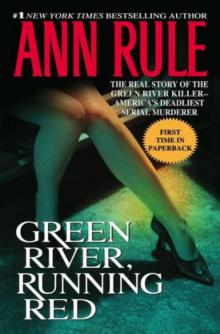 Green River, Running Red
Green River, Running Red Bitter Harvest
Bitter Harvest Dead by Sunset: Perfect Husband, Perfect Killer?
Dead by Sunset: Perfect Husband, Perfect Killer?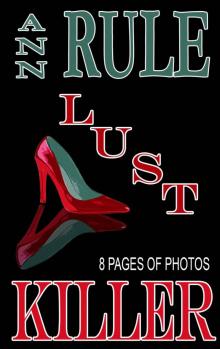 Lust Killer
Lust Killer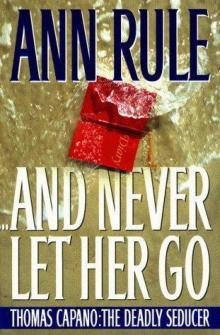 And Never Let Her Go: Thomas Capano: The Deadly Seducer
And Never Let Her Go: Thomas Capano: The Deadly Seducer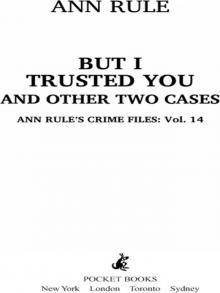 But I Trusted You and Other True Cases
But I Trusted You and Other True Cases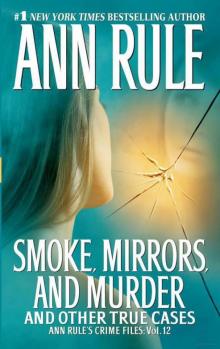 Smoke, Mirrors, and Murder and Other True Cases
Smoke, Mirrors, and Murder and Other True Cases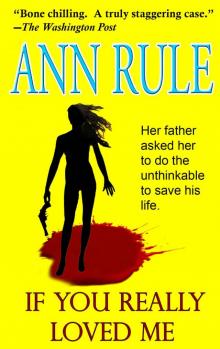 If You Really Loved Me
If You Really Loved Me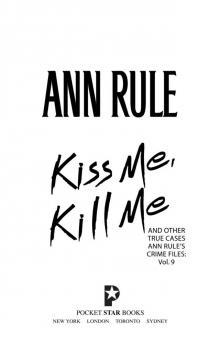 Kiss Me, Kill Me and Other True Cases
Kiss Me, Kill Me and Other True Cases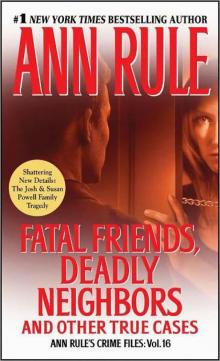 Fatal Friends, Deadly Neighbors and Other True Cases
Fatal Friends, Deadly Neighbors and Other True Cases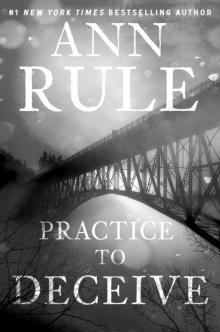 Practice to Deceive
Practice to Deceive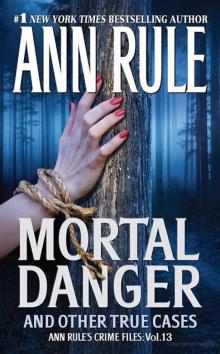 Mortal Danger and Other True Cases
Mortal Danger and Other True Cases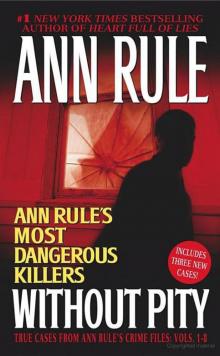 Without Pity: Ann Rule's Most Dangerous Killers
Without Pity: Ann Rule's Most Dangerous Killers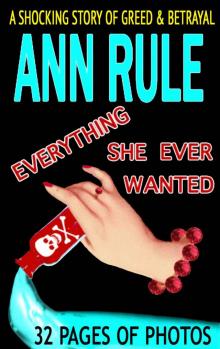 Everything She Ever Wanted
Everything She Ever Wanted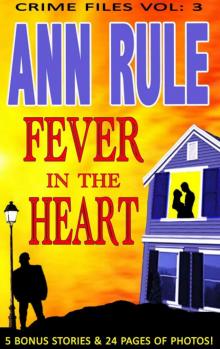 A Fever in the Heart and Other True Cases
A Fever in the Heart and Other True Cases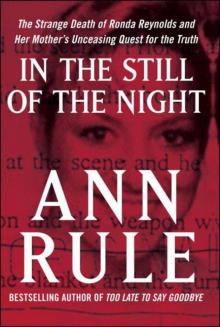 In the Still of the Night
In the Still of the Night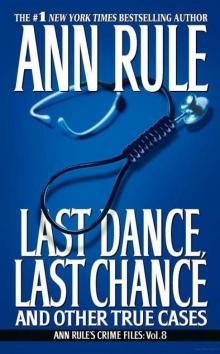 LAST DANCE, LAST CHANCE - and Other True Cases
LAST DANCE, LAST CHANCE - and Other True Cases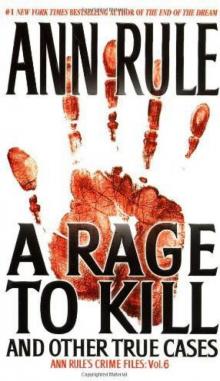 A Rage to Kill
A Rage to Kill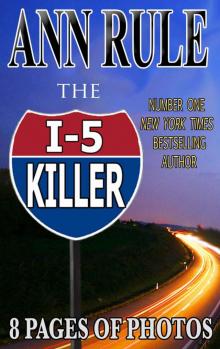 The I-5 Killer
The I-5 Killer The Stranger Beside Me
The Stranger Beside Me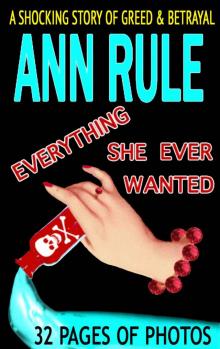 Everything She Ever Wanted: A True Story of Obsessive Love, Murder, and Betrayal
Everything She Ever Wanted: A True Story of Obsessive Love, Murder, and Betrayal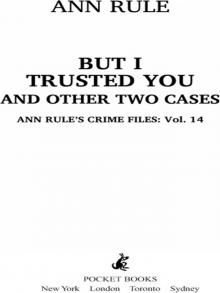 But I Trusted You
But I Trusted You Without Pity
Without Pity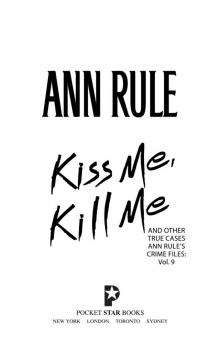 Kiss Me, Kill Me
Kiss Me, Kill Me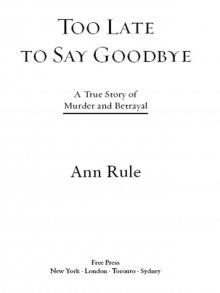 Too Late to Say Goodbye
Too Late to Say Goodbye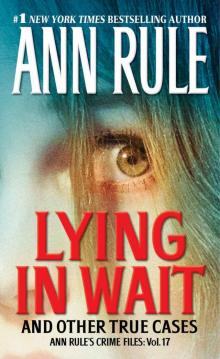 Lying in Wait
Lying in Wait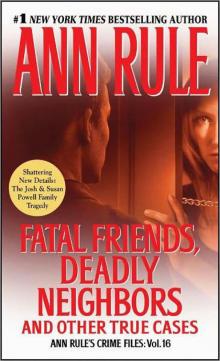 Fatal Friends, Deadly Neighbors
Fatal Friends, Deadly Neighbors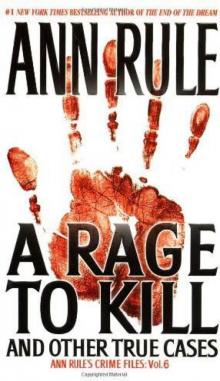 A Rage to Kill: And Other True Cases
A Rage to Kill: And Other True Cases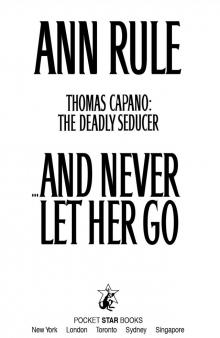 And Never Let Her Go
And Never Let Her Go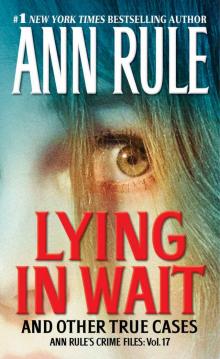 Lying in Wait Ann Rule's Crime Files Vol.17
Lying in Wait Ann Rule's Crime Files Vol.17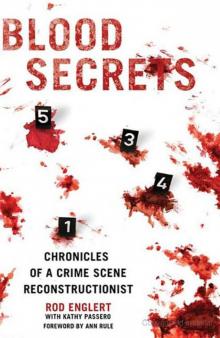 Blood Secrets: Chronicles of a Crime Scene Reconstructionist
Blood Secrets: Chronicles of a Crime Scene Reconstructionist No Regrets
No Regrets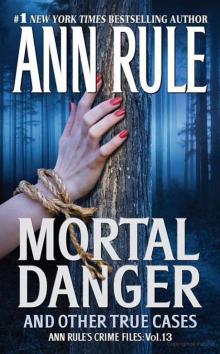 Mortal Danger
Mortal Danger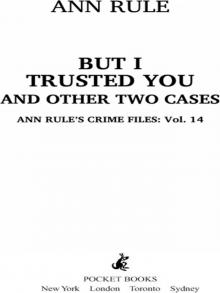 But I Trusted You: Ann Rule's Crime Files #14
But I Trusted You: Ann Rule's Crime Files #14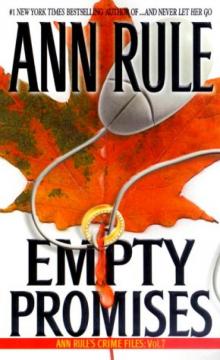 Empty Promises
Empty Promises Dead by Sunset
Dead by Sunset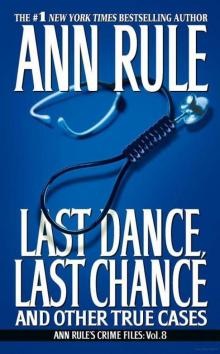 Last Dance, Last Chance
Last Dance, Last Chance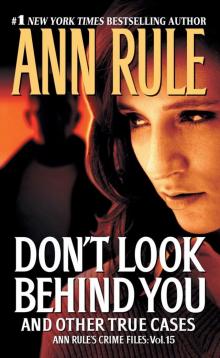 Don't Look Behind You
Don't Look Behind You